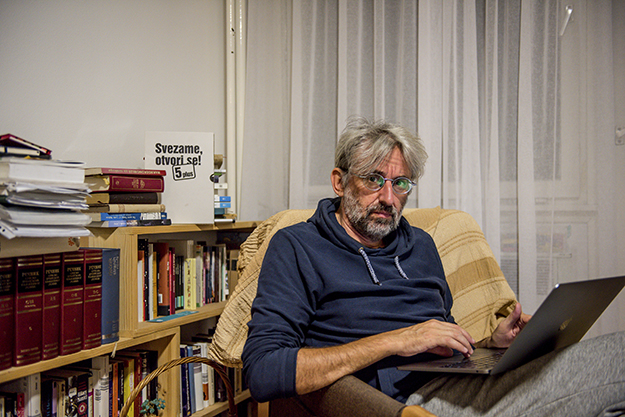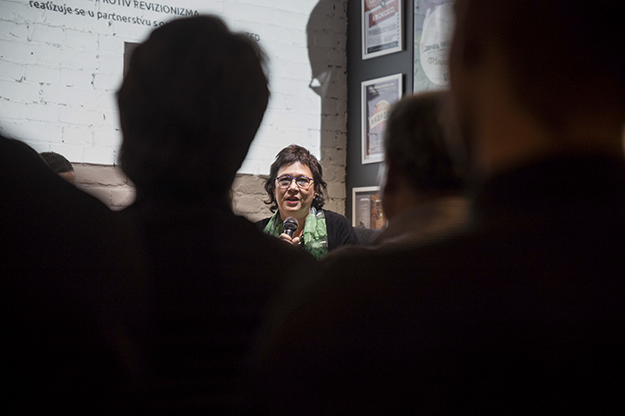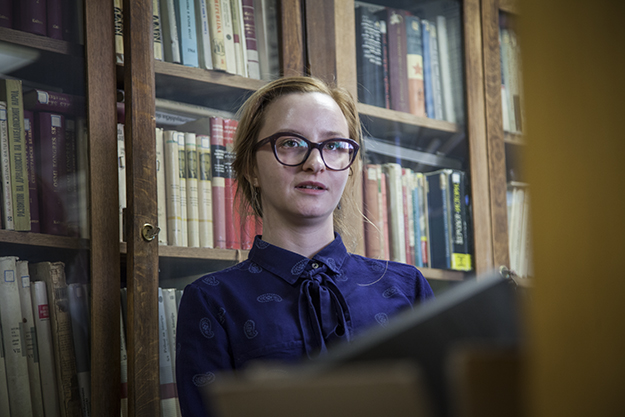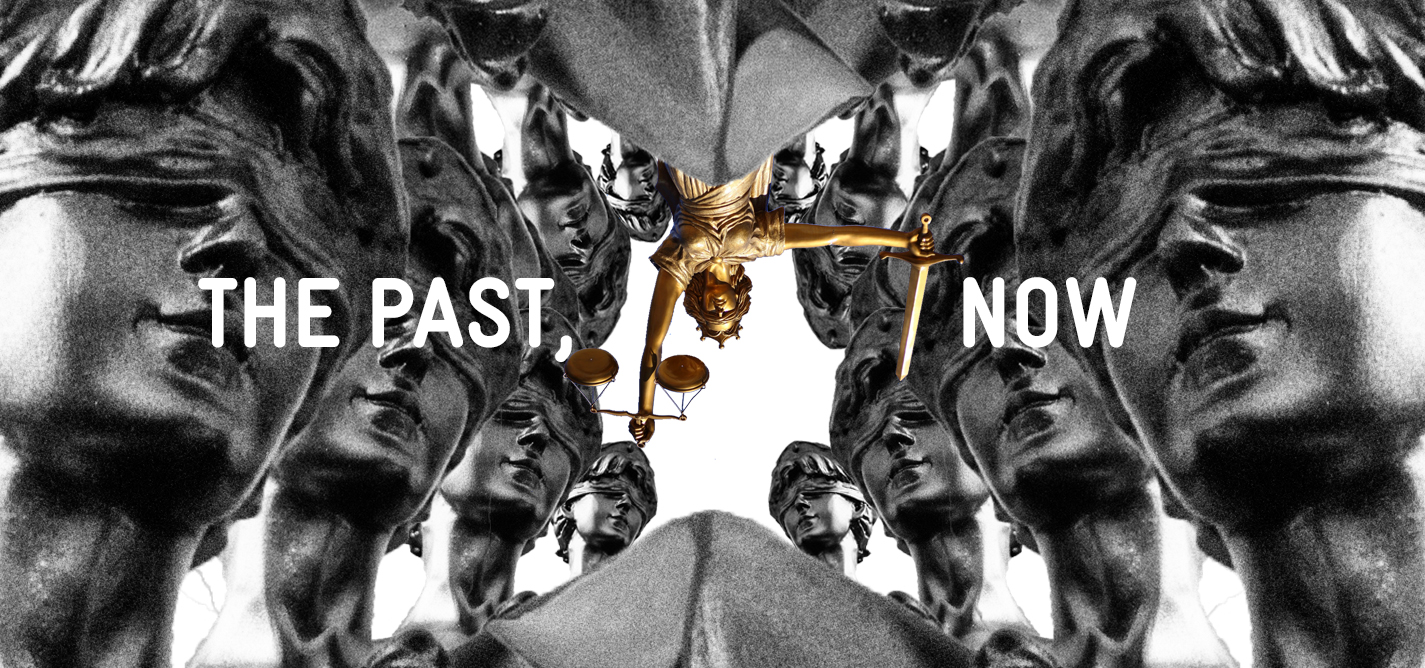If you type ‘history,’ ‘textbooks,’ ‘Serbia,’ and ‘Croatia’ into your browser in the Serbian/Croatian language, dozens of articles will appear, many containing words like ‘shocking’ or ‘scandalous’ in their headlines.
You will be able to read an article from a Croatian newspaper dating from 2017, stating that “Serbian students […] have been learning that Dalmatians are in fact Serbs,” and another one from the Serbian daily Blic from 2016, warning that the Croatian textbooks teach children that “Serbs are terrorists.”
You will also read about a scandal that broke out in 2015, when sixth grade history books in Serbia had to be taken off the market because they allegedly taught the children that “the Serbs stole Kosovo from the Albanians.” There will also be a mention of an article written by the German press agency, DPA, that concluded that “both Croatian and Serbian students learn a one-sided version of history.”
More than 20 years after the cessation of conflict in the post-Yugoslav states, battles over history are still waged, and narratives about the past differ depending on the side that teaches them. As Friedrich Nietzsche once said: “The future belongs to those who remember the past the most.”
Approaches toward the past and its teachings were, and still are, a topic of discussion, exploration and research by politicians, analysts, professors and NGOs, regional and foreign, as groups wrestle for control of the narrative. Today, there is a general understanding that history teaching in schools is significantly better than it was in the years that came immediately after the war, but still far from ideal.
Politics and ideologies in textbooks
Teaching about the wars of the nineties is especially a challenge in Bosnia and Herzegovina (BiH), where the Dayton Agreement, a peace treaty signed in 1995, influenced the organization of the education system into 10 cantonal ministries for education and science, plus the Brčko District as an independent unit, and two ministries at entity level.
“The ethnic division of Bosnia and Herzegovina has been copied onto education as well,” Dr. Vera Katz stated in her Bosnia and Herzegovina textbook analysis published in an edition of the Transitional Justice Forum. “What all these textbooks have in common is that [they bring up] the sacrifice that each of the ethnic groups had to make, for which the other, or two other ethnic groups are to be blamed,” writes Katz.
It is not just the tone of the textbooks used in schools but also the content that differs. In Croatian textbooks in BiH there is a thorough explanation of the wars in Slovenia and Croatia, while these events are rarely mentioned in Bosnian textbooks. In those published in the entity of Republika Srpska, the same events are described from a wholly different angle.
Where the war in BiH is concerned, an emphasis is placed on institutions and events related to the particular ethnic community, be that Croat, Bosniak or Serb. “The general characteristic of all textbooks is that they are silent toward some important events, while other events are emphasized, those that are beautifying one’s national history,” Katz concludes.

Professor Nenad Veličković conducted an analysis of textbooks used in elementary schools in Bosnia and Herzegovina, and believes them to be deeply politicized and embedded in ideological beliefs. Photo: Imrana Kapetanović / K2.0.
Nenad Veličković is a writer and professor from Bosnia and Herzegovina, who works at the Department for Serbian Literature, part of the School of Literature at the Faculty of Philosophy in Sarajevo. He was part of a team that implemented an analysis of the content of the textbooks used in elementary schools in BiH within the ‘ethnic’ category of subjects: the mother tongue language, history, geography, and musical and artistic education classes.
Veličković says that textbooks are politicized and embedded in ideological beliefs, while historical and language issues are approached from only one standpoint. He adds that biased representations of cultural, gender, religious and other differences are also present.
The conclusion of the analysis he worked on takes criticism of textbooks even further than this, stating that “within the new textbooks, which were produced in the past 10 years, no essential change has materialized in the concept and approach to education. They do not affirm the values of a democratic society, active citizenry, and social inclusion, critical thinking development is not sufficiently supported, and neither are creativity, or active learning.”
Textbooks are still very much embedded in ideological beliefs in Kosovo too, argues Mrika Limani, a historian and PhD student at the University of Prishtina, whose work mainly focuses on violence in Kosovo in the 20th century. Today, Serbs and Albanians in Kosovo still use completely different textbooks with two different historical narratives.
The NATO bombings and Serb victims have a central role in the Serbian textbooks, while Albanian textbooks focus more on the origins of the war and the crimes committed against the Kosovar Albanian population.
“We are still stuck in the nationalist narrative that has been built since the ’90s,” Limani says. “I feel that, even today, lot of my colleagues feel the need to produce a competitive narrative, fighting against the Serbian nationalist historical narrative. We feel like it is our responsibility as historians to go with the same flow and reproduce the same type of arguments, but from our perspective. Obviously, I think this is very much flawed.”
For Limani, the main issue is that in this way historians choose which facts to promote and which not to. Limani mentions that in the past couple of years Albanian language textbooks have received a lot of negative press because they minimize the importance of Serb victims and the number of Serb civilians murdered during the war.
Although she is confident that her colleagues working on newer textbooks would implement more objective methods, she considers that there is no political will to do any proper historical research at an institutional level.
“The state is not officially promoting history that further polarizes interethnic differences, but in practice I don’t think they do much against it. It is simply not their priority,” Limani claims. “History is becoming this tool to promote certain agendas, mostly political agendas. And I would say that Kosovo and Serbia are on the same page with this.”
Two wars, a variety of different stories
Dubravka Stojanović is a professor at the Belgrade Faculty of Philosophy’s History Department and took part in the development of the Textbooks of History in Post-Conflict Societies study, alongside Dr. Vera Katz.
Stojanović explains that problems exist in textbooks in Serbia as well, stating that there are contested textbook narratives regarding the reason for the dissolution of Yugoslavia. The professor also highlights notions present in textbooks that justify certain historical moments and events related to the wars of the ’90s that still show a continuity of the politics from that period.
“The issue is that the wars of the ’90s are presented in an identical manner as depicted by Milošević,” Stojanović says. “Serbian textbooks blame the ‘separatist republics,’ Slovenia and Croatia, which, with help from, for instance, Germany and the Vatican, broke up Yugoslavia in order to create their independent states.”
She adds that in many textbooks currently being used in Serbia, former president Slobodan Milošević’s arguments can still be found, sometimes even to the letter. She cites Milošević’s argument that “the Serbian people had to protect their rights, like everyone else did for themselves” — even if that right meant to be in one, united state.

Professor Dubravka Stojanović believes that textbooks used in Serbia since the ’90s have completely redrawn the history of World War II. Photo: Lazara Marinković. / K2.0.
Stojanović also believes that through the course of the ’90s and afterward, there was a certain redrawing of World War II history. “The places of Chetniks and Partisans have completely shifted,” she says. “Partisans have become the bad guys, while Chetniks are the good guys. It turns out that crimes against civilians were perpetrated by Partisans and that they were the ones to collaborate with the occupiers, not the Chetniks. This was a big scandal when the textbooks came out in 2003, but they remained in effect for almost eight years.”
The professor believes that the textbooks that replaced these have been “ironed out a bit,” but still stand on the side of the theory that two anti-fascist movements existed in Serbia, which plays down Chetnik collaboration.
For instance, in a 2006 textbook, collaboration with fascist Italy was noted as a lesser evil, less dangerous than the Ustasha, “and the best war solution for preserving the lives of Serbs, especially those in Lika, northern Dalmatia and Herzegovina.” Italian soldiers meanwhile were depicted as the “smallest evil of all the evils they had to endure.”
Erasing borders between fascism and anti-fascism was also particularly prevalent in Croatia in the ’90s, when the role of the Independent State of Croatia (NDH) in World War II was relativized.

Professor Snježana Koren highlights that history teaching is still being used to build national identities. Photo courtesy of Snježana Koren.
Snježana Koren, a professor at Zagreb University’s Faculty of Philosophy specializing in the methodology of history teaching feels that representations of the NDH in contemporary textbooks depict the turn of events in World War II far more accurately than those used in the ’90s.
However, comparative textbook analysis reveals that even today terms are still used that diminish the crimes committed by the Ustasha regime. There is only one textbook in which the term genocide is used to describe crimes against Serbs and Roma in World War II, while terms such as ‘terror enforced by authorities’ are used more frequently.
Koren feels there is often discomfort and reservation when places of mass suffering are mentioned, such as the Jasenovac concentration camp, ran by Croat NDH authorities. She points out that the same discomfort is not present in teachings on the Bleiburg repatriations, in which tens of thousands of Axis-associated soldiers and civilians were executed and put into forced labor camps during the process of repatriation. The professor adds that teaching about Jasenovac is often less present than teaching about Bleiburg.
Koren believes that some teachers have a tendency to avoid teaching about World War II and the occurrences after that. “I have previously heard about cases when people would end their fourth class of high school with the year 1941,” she explains.
But Koren believes that the most problematic aspect of history teaching throughout the region is that it hasn’t changed since the times of Yugoslavia, in that the purpose of teaching history is also to construct a national identity. “The difference is that ideologies change,” she says. “Hence, in the beginning of the ’90s, the focus was on World War II, and now, in Croatia for example, it is placed on the Croatian War of Independence.”
Focus on the Croatian War of Independence intensified in 2000, when the International Criminal Tribunal for Former Yugoslavia filed indictments against Croatian military warlords, leading to the Croatian Parliament adopting declarations that helped offer an official explanation of events during the war. In 2000, the Declaration on the Croatian War of Independence was published, followed in 2006 by the Declaration on Oluja, statements that Koren feels undoubtedly influenced teaching on the period.
The alternative
When official ways of teaching history presents a one-sided narrative, civil society often attempts to fill in the gaps. In Kosovo, the Humanitarian Law Center (HLC) advocates for changes to the textbooks so that they include fact-based information on war casualties. They also provide informal education workshops to students in high schools and universities, as well as to NGO representatives, on what happened in Kosovo during the ’90s.
“We present students with the facts,” Njomza Haxhibeqiri, a former project manager at HLC explains. “We explain to them what led to the conflict, and then present them with the Kosovo Memory Book database, which contains numerous documents compiled since 1999: statements from eye witnesses and family members of war victims and thousands of supporting pictures and documents.”
One part of the workshop focuses only on the stories of the victims, in the hope of achieving greater inter-ethnic empathy. “We play them recordings of three stories of victims, two of them are Albanians and one Serb,” says Haxhibeqiri, who has led many of the sessions. “While presenting them we don’t tell the students what the victims’ nationalities are, and the stories are edited in a way that students cannot know where they took place.”
Haxhibeqiri says that students are often surprised when they learn the identity of the victims. “Our Albanian students usually guess that they are Albanian, but when they hear that one of them is a Serb, they start to realize that nationality doesn’t really matter, because when we don’t know the nationality of the victim and we just hear the story, we relate straight away,” she adds.
To date, HLC has only been given the green light to organize workshops in Kosovar Albanian majority high schools. To bridge the gap between the Serb and Albanian students, they organize summer schools on transitional justice for young people in Kosovo aged between 18 and 27.
“We want to include students from all the communities in this workshop,” Haxhibeqiri says. “We discuss the war and transitional justice together, but we also visit the family members of war victims, both Albanian families and Serb families. We discuss the right to justice, the right to truth, reparations and institutional reforms, and for each topic we invite regional experts.”
Larger initiatives seeking this kind of multiperspectivité, where each historical event is presented from the positions of different peoples, also exist. The Joint History project was launched in 1999 when the Center for Democracy and Reconciliation from Thessaloniki in Greece gathered together historians from all Balkan countries in order to develop joint historical readers.
In 2005, four books were published on the topics of the Ottoman Empire, the nation and nation states, the Balkan Wars, and World War II. Since 2016, two new volumes have been published: the first dealing with the Cold War period of 1944-89, and the second with the transition of 1990-2008, including the Yugoslav wars of the ’90s.
“Each event is presented from multiple perspectives, which opens a debate about what each of the events meant for which side, and why differences in understanding are so large,” Stojanović says. “With this we provided the first overview of those wars from a multiperspectivity methodology, explaining what, for instance, Oluja meant to the Croats, and what it meant to the Serbs, and how this can be debated even more.”
The professor adds that the publishing of the books was followed by seminars in Vukovar, Mostar, and Bujanovac, where teachers from different ethnic groups were invited in order to discuss the ways in which historical events can be taught with a multiperspective approach.
“We believe that this is the first step toward understanding the events that still set us apart, which even today are used to create new conflicts,” says Stojanović, who participated in the development of the textbooks. The first books from 2005 have so far been translated into all the region’s languages, and preparations and joint trainings are underway for Serbian and Albanian teachers.

Historian Mrika Limani has reservations about the joint history books initiative, feeling that they often blur the lines between the oppressor and the oppressed. Photo: Majlinda Hoxha / K2.0.
When asked about her opinion on the joint history books initiative, Mrika Limani has words of praise but is not too enthusiastic. “I thought these books were a nice initiative, but my issue [with them] is that they are very wary of ethnic connotations and I feel they sort of blurred the lines between the oppressors and the oppressed,” she says. “This is problematic. I don’t feel we need to make everything relative in order to reconcile. The problem is that, if nobody takes the responsibility, the victims will never feel like justice was done.”
When it comes to good practices of “guilt acknowledgment,” Limani singles out Germany’s way of dealing with history. “They decided that they needed to stand up and take responsibility for what [their] people did. I believe this is a positive approach,” she says.
Asked if she could imagine this approach being implemented in the Balkans anytime soon, Limani goes for a pessimistic ‘no.’ “The conflict in the Balkans was just very complicated, it didn’t only happen along ethnic lines, but it was also a conflict about different groups, different classes, different cultural identities,” she says. “So everyone needs to apologize and nobody is going to apologize.”
One of the best known “apologising gestures” in history happened when the German Chancellor Willy Brandt visited the Monument to the Ghetto Heroes in Warsaw in 1970. In front of the monument, he dropped to his knees and stayed in that position for a couple of minutes, to beg for forgiveness for the crimes of the Nazi Germany era. The act is known in German as Kniefall von Warschau, The Warsaw Genuflection.
There have been multiple leaders from the Balkans that have apologized for the crimes of the past wars, starting with Montenegrin President Milo Đukanović, who back in 2000 offered an apology for the Montenegrin aggression on the Dubrovnik area. Serbian President Boris Tadić has apologized for the crimes in Bosnia and Croatia, and even the NATO chief, Jens Stoltenberg, declared in 2015 that he “sincerely regrets civilian deaths in the NATO bombings in 1999.”
None of these apologies, however, have remained in the collective memory in the region. Meanwhile, the Balkans are still waiting for their local Willy Brandt, whose gestures young people could one day learn about in their history books.K
Feature image: Imrana Kapetanović / K2.0.

Back to monograph






